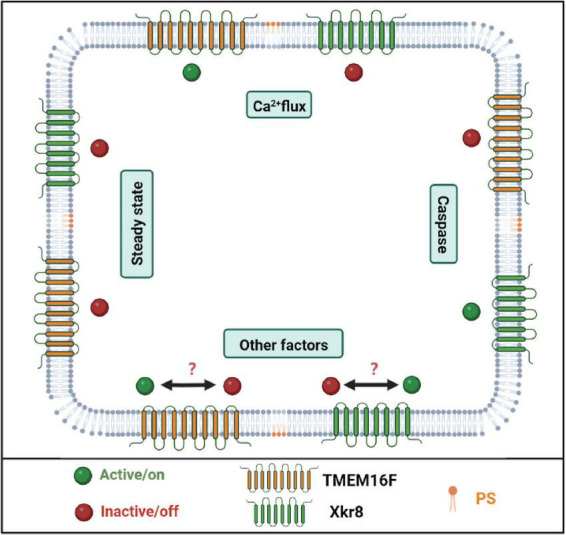FIGURE 2.

The scrambles are responsible for phosphatidylserine (PS) exposure. PS scrambles are responsible for PS translocation during cell apoptosis as well as other biological processes. TMEM16F and XKr8 are well-documented PS scrambles. When the intercellular Ca2+ concentration is upregulated, TMEM16F binds Ca2+ and transports PS to the outer leaflet of the plasma membrane. When the cell undergoes apoptosis, caspase cleaves and activates XKr8, and then XKr8 exposes PS to the outside of the cell and releases the “eat me” signal. But in other biological processes, it remains unknown which scramble is activated or both of them are activated. Created with BioRender.com.
